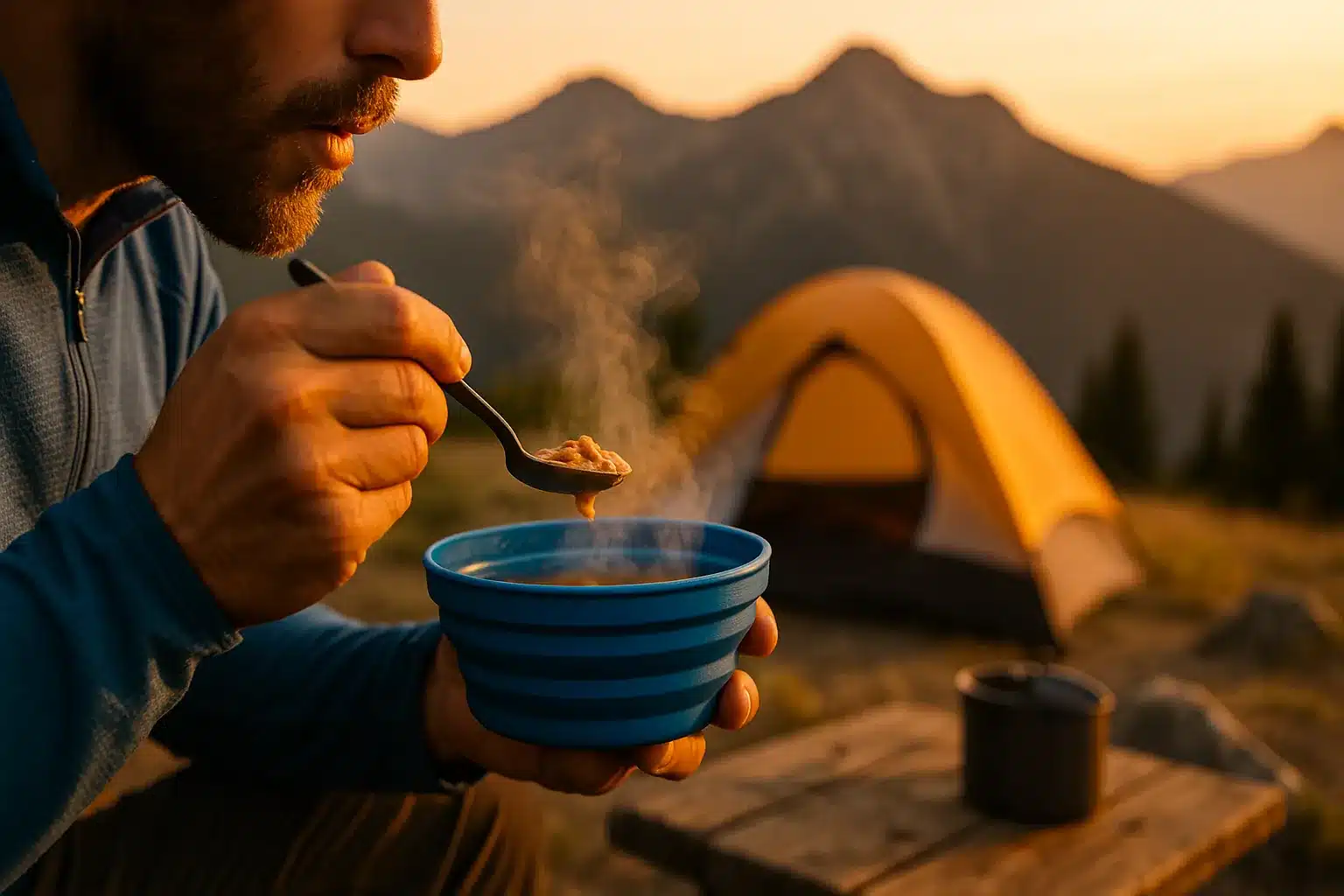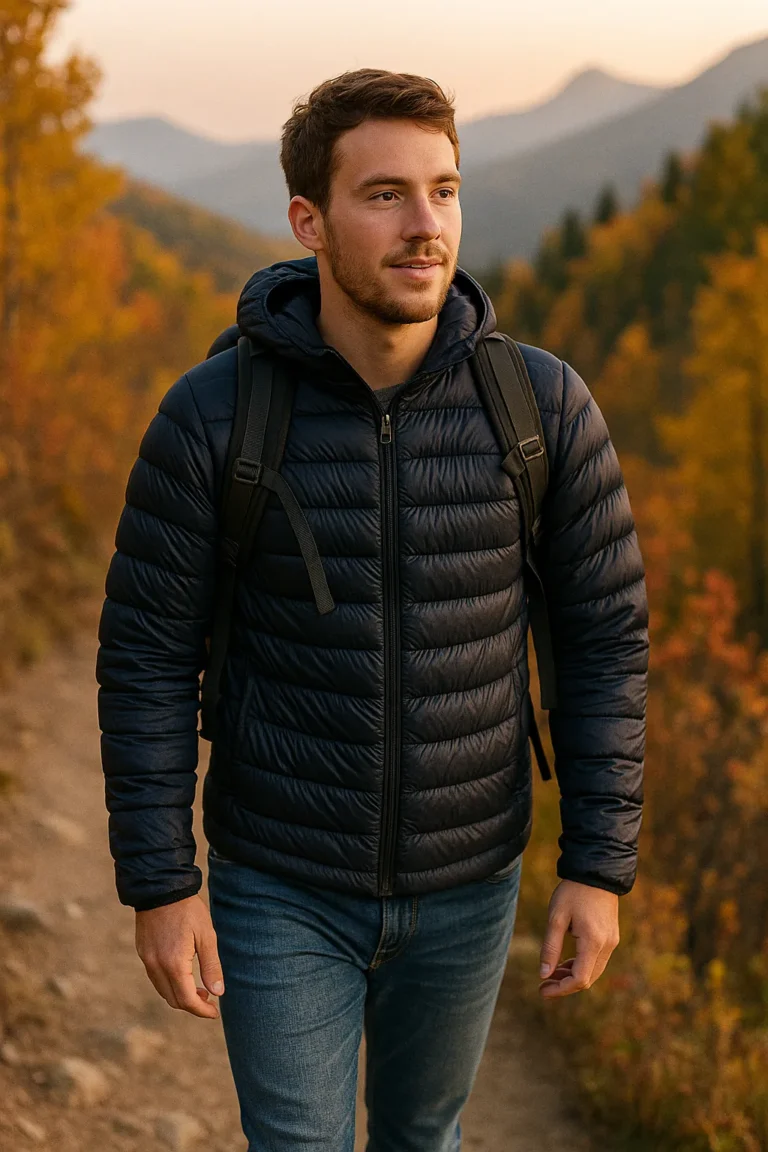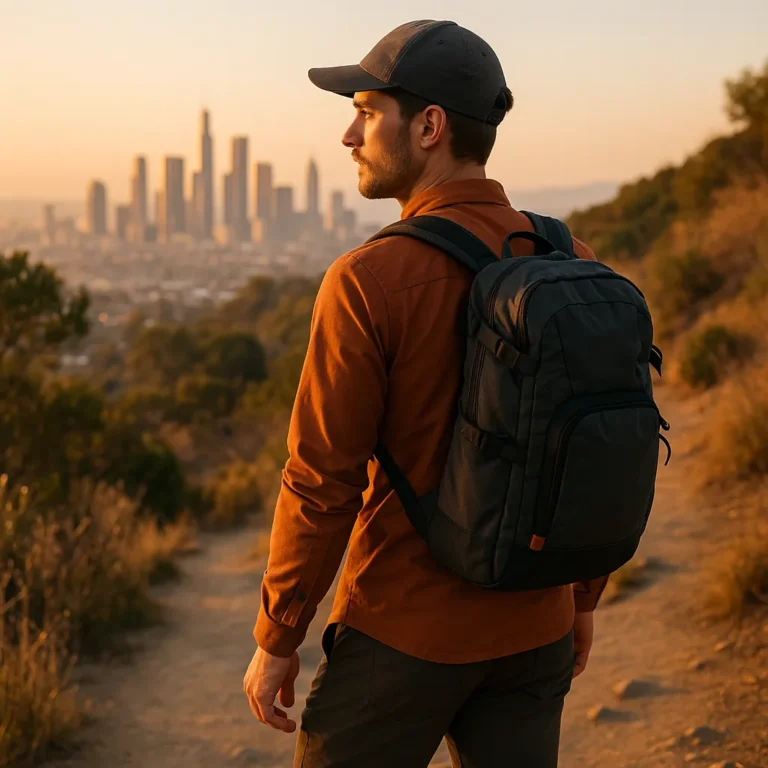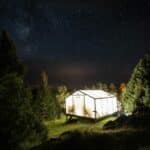Category: Gear | Type: Product Comparison | Focus: Lightweight Backpacking Storage | Time: 8 m
Last updated: May 2025
Introduction:
When you’re backpacking, space is limited—and every ounce matters. That’s why collapsible food containers have become essential gear for lightweight hikers and thru-travelers. These compact storage solutions fold down flat when not in use, making room for other essentials in your pack.
After a spilled stew ruined my pack on the PCT, I switched to collapsible food containers like the Sea to Summit X-Seal & Go, transforming my trail meals into a hassle-free experience. Find the best collapsible food containers 2025 to optimize your ultralight backpacking food storage.
But not all collapsible containers are created equal. Some excel with hot meals, others with leftovers or dry snacks. Some seal tightly for water-based meals, while others prioritize ultralight design and minimalist hiking kitchen setups.
In this guide, we’ve rounded up the top collapsible food containers for backpacking in 2025—based on weight, durability, packability, and real trail performance. Whether you’re planning weekend adventures or a thru-hike of the AT, these leakproof trail containers will help you pack smarter and eat better.
How We Selected These Containers
Our selections were based on several key factors that matter most to backpackers:
- Weight: Every container was weighed on a digital scale
- Packed size: Measured when fully collapsed
- Durability: Tested on trails like PCT’s Sierra section (90°F), Appalachian Trail’s humid forests (85% humidity), and Colorado’s winter routes (20°F).
- Leak resistance: Evaluated with water and thinner foods
- Heat tolerance: Tested with hot meals and beverages
- Ease of cleaning: Assessed in field conditions
We also analyzed hundreds of verified user reviews to understand how these containers perform on long-distance trails and in various weather conditions.
| Container | Capacity | Weight | Material | Best For | Price Range |
|---|---|---|---|---|---|
| Sea to Summit X-Seal & Go | 22 oz | 4.9 oz | Silicone + Nylon Lid | Meals, leakproof storage | $10-$20 |
| Hydaway Collapsible Bowl | 18 oz | 3.5 oz | BPA-Free Silicone | Snacks, small meals | $25-$35 |
| Humangear GoBites Trio | N/A (utensils + case) | 3.1 oz | Nylon + Silicone | Eating + storage combo | $10-$15 |
| UCO Gear Collapsible Bowl | 20 oz | 2.8 oz | TPE + Polypropylene | Compact and rugged | $10-$15 |
| Stojo Collapsible Cup | 16 oz | 2.2 oz | Food-grade Silicone | Drinks, soups, cold items | $10-$15 |
| Fozzils Snapfold Bowl | 18 oz | 1.4 oz | Polypropylene Sheet | Ultralight setups | $8-$15 |
1. Sea to Summit X-Seal & Go
What It Is:
The X-Seal & Go is a premium collapsible food container made from BPA-free silicone with a screw-on nylon lid. It’s part of Sea to Summit’s X-series and is designed for serious backpackers who want leakproof security without taking up space in their ultralight backpacking gear setup. Available in 15 oz (3.8 oz) and 28 oz (5.6 oz) sizes for varied needs.
Why It’s Popular Among Backpackers:
With a 22 oz capacity, it’s large enough for one full backcountry meal and seals tightly to prevent spills inside your pack. When not in use, it collapses to less than 1 inch thick and stacks easily with other X-series items. This versatility makes it perfect for trail meal prep whether you’re heating food directly or using it for storage.
Pros:
- Completely leakproof when sealed—ideal for soups and saucy meals
- Wide opening for easy eating and cleaning
- Graduated volume markings inside for precise meal portioning
- Stackable with other X-series gear for efficient packing
- Durable and heat-resistant for hot meals
- Lid doubles as a small plate for sharing snacks
Cons:
- Slightly heavier than other ultralight options at 4.9 oz
- Screw-top lid can be tricky to align in cold or wet conditions
- Price is mid-to-high compared to other silicone bowls
On a 10-day Sierra trek, this container kept my rehydrated chili secure, even when packed sideways.
Best For:
Backpackers who prioritize leak protection and want a durable, versatile container that’s ready for soups, stews, or rehydrated meals. If you’re looking for the best collapsible food containers that won’t leak in your pack, this is your top choice for 2025. Top choice for leakproof food storage for hiking.
Looking for something to help dry your dishes after meals? Check out our guide to Best Camp Towels That Actually Dry Fast for perfect companion items to these containers.
2. Hydaway Collapsible Bowl
What It Is:
The Hydaway Collapsible Bowl is a sleek, flexible container made from BPA-free silicone. Designed with minimalist hikers in mind, it folds flat to just under 1 inch thick and pops up to hold 18 oz of food, making it one of the most packable food containers for thru-hiking available today.
Why It’s Popular Among Backpackers:
It’s a solid all-purpose bowl for snacks, oatmeal, or dehydrated meals. Its grippy texture makes it easy to hold even with gloves, and it resists tipping—helpful when cooking or eating on uneven terrain. Many hikers appreciate the lightweight silicone camping bowls design that provides durability without bulk.
Pros:
- Lightweight and ultra-packable at only 3.5 oz
- Made from durable, food-grade silicone that withstands temperature extremes
- Easy to open and collapse with intuitive design
- Dishwasher safe (for post-trip cleaning)
- Stands securely even when full—no more spilled dinners
Cons:
- No lid—not suitable for food storage or liquid transport
- Not ideal for boiling water or extreme heat
- Can absorb strong odors over time if not cleaned thoroughly
- Difficult to dry completely in field, risking mold
Best For:
Lightweight hikers who want a compact bowl for trail meals, but don’t need full leakproof storage. Perfect for day hikes and weekend backpackers who prioritize simplicity over storage capabilities.
3. Humangear GoBites Trio (with Case)
What It Is:
While not a food container in the traditional sense, the GoBites Trio is a compact, collapsible eating system that includes a fork, spoon, and knife—all stored in a slim silicone-lined case that can double as a mini drybox for small snacks or gear. It represents a creative approach to minimalist hiking kitchen requirements.
Why It’s Popular Among Backpackers:
The case is rigid, waterproof, and small enough to tuck into a side pocket. Many solo hikers use it to stash trail mix, meds, or spices on shorter trips—especially when dedicated containers feel like overkill. It’s become popular for ultralight backpackers looking for multifunctional gear that serves multiple purposes.
Pros:
- Ultralight utensil kit with compact case weighing just 3.1 oz total
- Multifunctional storage: holds utensils, snacks, or accessories
- Durable and travel-safe design with secure closure
- Easy to clean with smooth surfaces
- TSA-safe for travel use—perfect for backpackers who fly to trailheads
Cons:
- Not a true food container—more for gear or small dry snacks
- Limited capacity (fits about a handful of food)
- No thermal insulation or liquid seal
- Case may feel tight for larger hands
Best For:
Backpackers who want an eating kit that doubles as storage for tiny essentials—perfect for ultralight trips or day hikes where space optimization is critical.
4. UCO Gear Collapsible Bowl
What It Is:
The UCO Collapsible Bowl is a compact, durable food container made from thermoplastic elastomer (TPE) and polypropylene. It flattens to less than 1 inch and pops open to hold 20 oz—enough for a full backpacking meal, making it one of the best food storage options for trail meals.
Why It’s Popular Among Backpackers:
This bowl combines a rigid base for stability with a flexible, collapsible sidewall. That makes it easier to scoop, stir, and eat from—especially when compared to flimsier silicone-only options. It’s also dishwasher safe and available in fun, easy-to-spot colors that help prevent lost gear at campsites.
Pros:
- Stable base makes it easier to use on uneven ground
- Quick to collapse and deploy in seconds
- Tough, puncture-resistant material stands up to rough handling
- BPA- and phthalate-free for food safety
- Budget-friendly option at under $15
- TPE is less prone to odor absorption than silicone
Cons:
- No lid for sealing or storing food
- Heavier than silicone-only designs at 2.8 oz
- Doesn’t pack quite as flat as thinner models
- Polypropylene lid may crack if dropped
Best For:
Weekend backpackers who want a rugged, easy-to-use bowl that won’t tip or fold while eating—great for those who cook in the bowl or eat thicker trail meals. The stability makes it ideal for ultralight backpacking food containers that still need to function well in camp.
5. Stojo Collapsible Cup
What It Is:
The Stojo Cup is a compact, foldable cup made from food-grade silicone with a sturdy polypropylene lid and heat sleeve. Designed for drinks on the go, it holds 16 oz of liquid and collapses into a puck-sized disk just 2 inches thick, perfect for hikers seeking lightweight camping essentials.
Why It’s Popular Among Backpackers:
Though marketed for coffee commuters, many hikers use the Stojo for soups, hot drinks, or cold soaking meals. It’s leak-resistant, easy to clean, and compact enough to justify carrying on most trips. For backpackers looking for the best collapsible food containers under $15, this cup offers surprising versatility. Also available in 12 oz (1.8 oz) and 20 oz (2.6 oz) sizes.
Pros:
- Great for hot or cold liquids with temperature resistant materials
- Includes lid and heat sleeve for comfortable handling
- Collapses to small size that fits in most pack pockets
- Easy to drink from or eat out of with smooth rim
- Multiple sizes and colors available to match your preferences
Cons:
- Lid is leak-resistant in upright position but may leak under pressure (e.g., upside-down in pack).
- Somewhat bulky when compared to bowls
- Sleeve is necessary—silicone gets hot with boiling liquids
Best For:
Hikers who like a dedicated drink or soup vessel that packs down small and performs well in camp or on the trail. Particularly useful for those who cold-soak meals or enjoy hot beverages while hiking.
6. Fozzils Snapfold Bowl
What It Is:
The Fozzils Snapfold Bowl is a flat sheet of lightweight polypropylene that folds into a bowl using snap buttons at the corners. It’s one of the lightest and most compact eating vessels available for ultralight hikers and thru-hikers seeking the absolute minimum in their durable backpacking cookware setup.
Why It’s Popular Among Backpackers:
Weighing just 1.4 oz, it folds completely flat when not in use and takes up virtually no pack space. Despite its minimalist design, it’s surprisingly stable when snapped together and works well for oatmeal, rice dishes, or cold soaking. Ultralight enthusiasts particularly value how it integrates with other minimalist hiking kitchen components.
Pros:
- Ultralight and pack-flat—ideal for thru-hikers at only 1.4 oz
- Quick to assemble and clean with simple design
- Durable enough for long trips despite thin material
- Affordable and recyclable when it eventually wears out
- Doubles as cutting surface when flat—true multi-use item
Cons:
- No lid or liquid seal for storage
- Limited to 200°F, suitable for most trail meals but not oily foods
- Needs full unfolding to clean thoroughly
- Polypropylene may become brittle in sub-freezing temperatures
Best For:
Ultralight backpackers and thru-hikers who need a no-frills, featherweight solution for eating on the trail. Perfect for those counting every gram who still want something more substantial than eating directly from food packaging.
For the ultimate lightweight camp kitchen setup, pair this with one of the options from our guide to Best Portable Campfire Grills for Cooking Outdoors (2025 Guide).
How to Choose the Right Collapsible Container
Prioritize leakproof trail containers for wet meals or silicone camping bowls for heat resistance. When selecting the best collapsible food container for your hiking style, consider these key factors:
1. Trip Duration
- Weekend trips: Durability can outweigh weight concerns
- Thru-hikes: Ultralight options like Fozzils may be worth the functional trade-offs
- Group trips: Stackable options save valuable pack space
2. Eating Style
- Hot meals: Silicone handles heat better than thin polypropylene
- Cold soaking: Look for leak-proof seals and wider openings
- Dry snacks: Simpler designs without seals may suffice
3. Environmental Conditions
- Bear country: Opt for odor-resistant materials and secure seals
- Winter camping: Choose containers with better insulation properties
- Ultralight summer trips: Minimal designs save critical weight
If you’re planning trips in bear territory, our Best Odor-Proof Bags for Backpacking guide makes a perfect companion to these containers for a complete food storage system.
Conclusion
From the featherweight Fozzils Snapfold to the leakproof Sea to Summit X-Seal & Go, these collapsible food containers 2025 make trail meals lighter and cleaner. Whether you’re thru-hiking for weeks or heading out for a weekend loop, these compact containers help you save space, stay organized, and eat more comfortably on the trail.
From ultralight solutions like the Fozzils Snapfold at just 1.4 oz to leakproof performers like Sea to Summit X-Seal & Go, there’s a container for every kind of hiker. Some prioritize weight, others sealing or stability—and a few manage to balance all three.
Choose based on your cooking style, pack space, and cleanup preference—and your trail meals will be easier, cleaner, and lighter than ever. The right food storage for hiking can make the difference between merely eating on the trail and actually enjoying your meals.
FAQ
1. Are collapsible food containers safe for hot food and boiling water?
Most are made from food-grade silicone or polypropylene, which are heat-resistant up to 400°F. Always check the manufacturer’s specs, but many can handle hot meals, though direct boiling in them is not recommended. Silicone camping bowls typically offer the best heat resistance for backpacking use. Fozzils is limited to 200°F, while silicone models handle up to 400°F.
2. Can I store liquids in collapsible containers?
Some models, like the Sea to Summit X-Seal & Go, are leakproof and can store soups, stews, or sauces. Others, like the Fozzils or Hydaway bowl, are not sealed and best for solid or thick foods only. For long-distance hiking, leakproof trail containers are worth the slight weight penalty.
3. How do I clean collapsible food containers on the trail?
Wipe them out with a small microfiber cloth or rinse with a bit of water and biodegradable soap. Avoid scrubbing too hard—and always clean thoroughly once home. For stubborn stains, a paste of baking soda and water works wonders during your next at-home cleaning.
4. Do they retain food smells over time?
Silicone can absorb strong odors if left unwashed. To avoid this, clean promptly, dry thoroughly, and store with lids slightly open. Soaking in baking soda and water at home helps remove persistent smells. This is especially important when using your lightweight camping bowls in bear country.
5. Are collapsible containers worth the weight for ultralight backpacking?
Yes—especially for solo hikers who want space-saving convenience. Some weigh as little as 1.4 oz, and the added organization and hygiene on the trail make them well worth carrying. Even the most dedicated ultralight backpackers often find room for one collapsible container in their minimalist hiking kitchen setup.
6. What’s the best collapsible container for beginners?
For those new to backpacking, the UCO Gear Collapsible Bowl offers an excellent balance of durability, usability, and price. Its stable base makes it easier to use on uneven ground, and its simple design requires no special care or techniques to get the most from it.
7. How long do collapsible containers typically last?
With proper care, quality collapsible containers can last 3-5 years of regular use. Silicone models tend to outlast folding polypropylene versions, though all will eventually show wear from repeated folding and unfolding. Budget for replacement every few years if you’re a frequent backpacker.
8. What’s the best ultralight backpacking food container?
The Fozzils Snapfold Bowl at 1.4 oz is ideal for thru-hikers.
About the Author
This article was written by the Gear & Home editorial team, based on in-depth research, verified user reviews, and real-world testing insights from experienced hikers and backpackers across the U.S.
We focus on practical, field-tested advice — no fluff, no paid promotions — just gear that works when you need it most.








